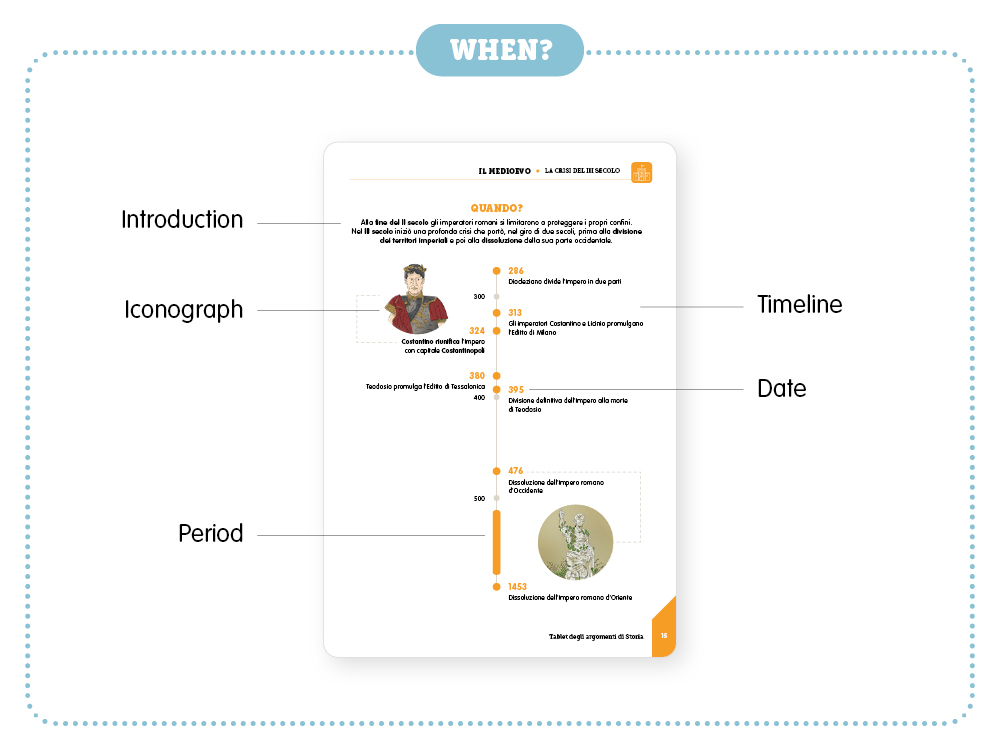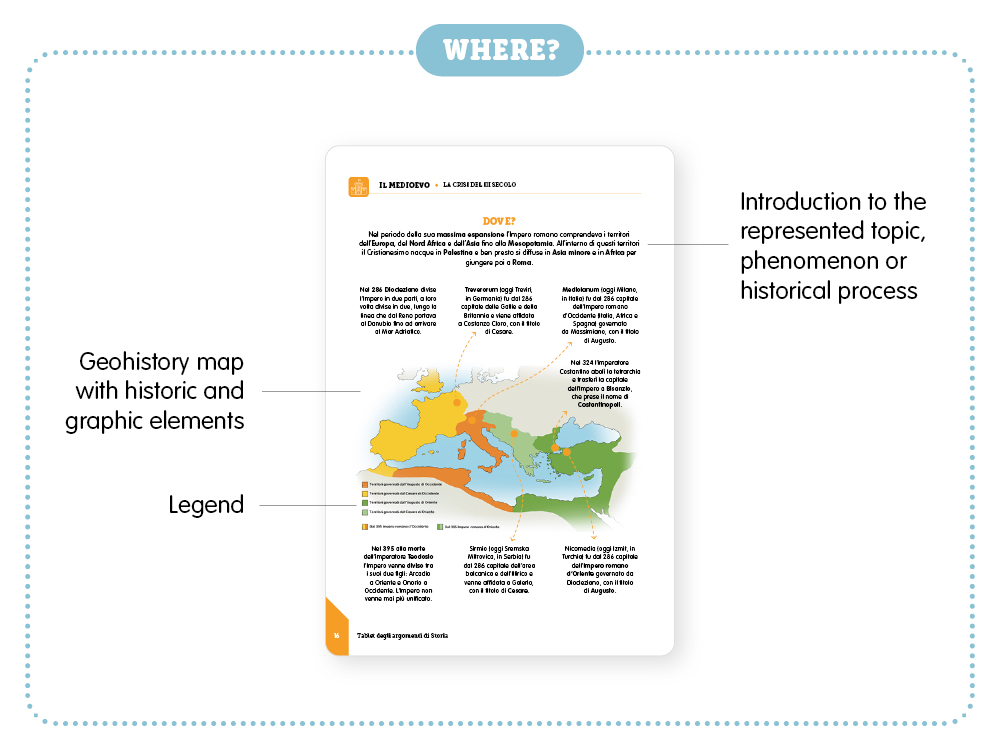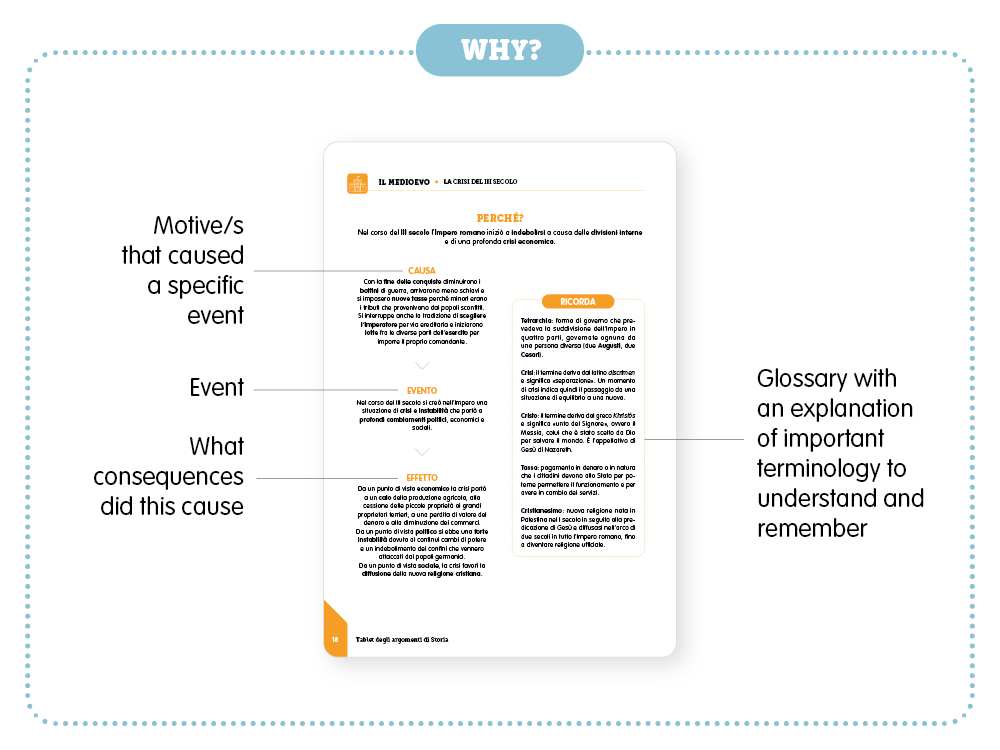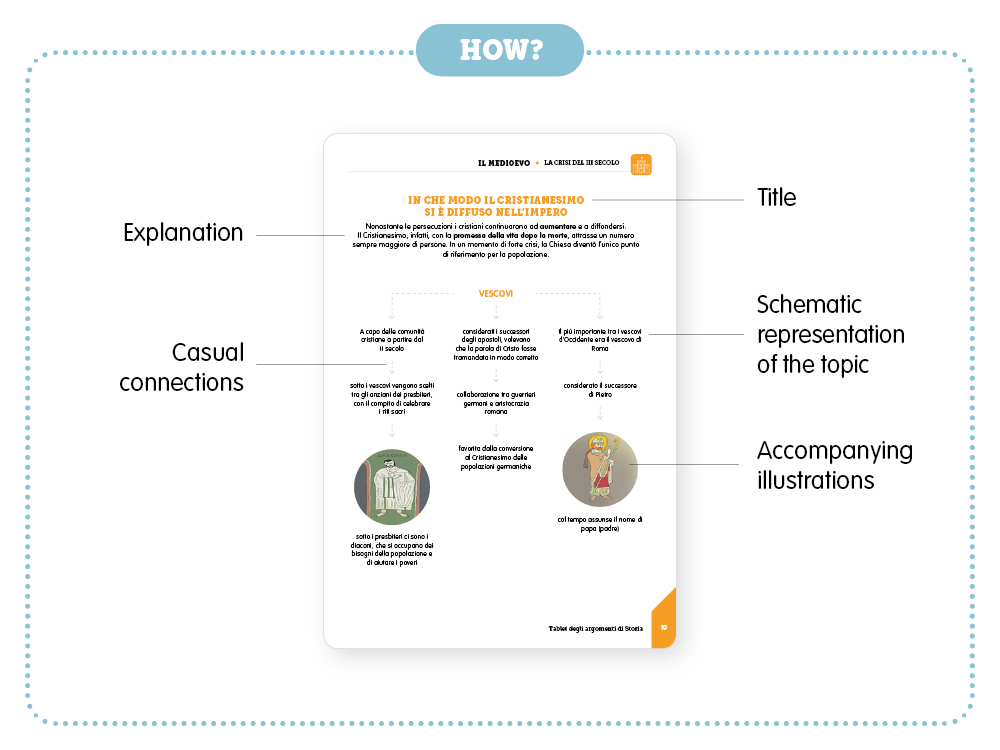 EN
EN
 PT
PT

Lower secondary school
This volume offers the entire history programme of lower secondary school in a simplified format.
Practical and manageable, just like a real tablet where any piece of information can be instantly found with a simple touch, The Tablet of History Topics presents topics from the Middle Ages to the Contemporary Age.
A tool designed to complement textbooks and help students with self-study and the development of the basic skills of the discipline.
Easy to consult, thanks to a clear and clean colour graphic layout and the adoption of a simple and immediate vocabulary, it is an indispensable tool for students, teachers and parents, and can be very effective for pupils with Specific Learning Disorders.
Structure of the book
The volume is divided into three historical periods: the Middle Ages, the Modern Age and the Contemporary Age. The topics are treated in such a way as to be easily adapted to different teaching methodologies as well as to the different textbooks used in class. At the end of the volume, there is a brief presentation of the main historical figures.

Structure of the chapters
After an introduction to the topic, each chapter is divided into four parts:
When?, contains the temporal reference for the main events placed on a timeline;

Where?, with a geographical map showing the important places and information;

Why?, with an explanation of events in a cause-effect relationship;

How? (or “In which way”), with schematic insights about a particular topic.

Progressive subject level difficulty
The topics are presented in increasing levels of difficulty, in the same order that the subject is taught from the first to the third year of middle school.
Leaf through some selected pages from the book that have been translated into English to facilitate your evaluation:
The Author
Alessandra Lochner
With a degree in Modern Literature with a specialization in History and Criticism of the Arts at the University of Trento, she is a secondary school Literature teacher. She has carried out research in the field of cinema and toponymy, has worked with the UCT publishing house and with some online newspapers on the topics of literature and cinema.